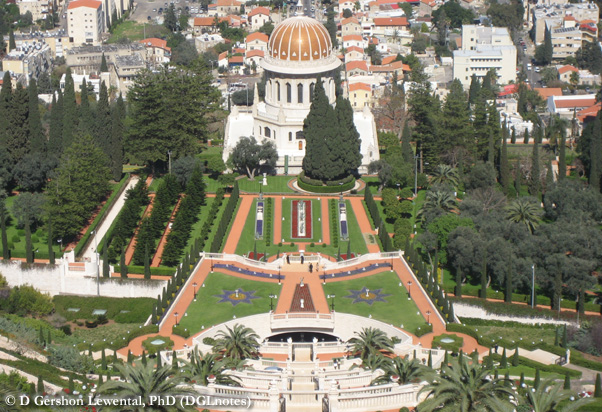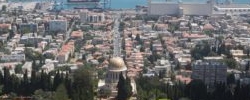- About
- Events
- Notes and studies
- Bahā’ī studies
- Course syllabi
- Introductory/survey courses

- Higher-level courses

- Religion and society in the Middle East
- Nineteenth- and Twentieth-Century Iran
- Early Islamic history, 600–1258
- Arab-Israeli conflict
- Political Islam
- The Making of the modern Middle East
- History and development of Israeli society
- Minorities of the Middle East
- Shīʿī Islam
- History of Zionism
- Jews and Christians under Islam
- Jews of the Ottoman Empire
- The Middle East through film
- Israeli society through film
- Ottomans and Ṣafavids
- Israeli politics
- Mediæval Indian history
- Seminar/graduate courses

- Introductory/survey courses
- Publications
- News
- Contact
DGLnotes—Bahāʾī studies section

The Bahāʾī faith emerged in Iran during the mid-Nineteenth Century as a new religion within the Abrahamic monotheistic faith tradition, focusing on human unity and equality. Although the faith and its prophet-founder, Bahāʾ-Ollāh (also Baháʾu’lláh, born Mīrzā Ḥusayn-ʿAlī Nūrī, 1817–1892) came from Iran, persecution brought them to ʿAkko (Acre) and Ḥaifa (Haifa) in Ottoman Palestine, where the leadership of the faith has remained ever since. For nearly a century, the families and descendants of Bahāʾ-Ollāh and many of his early followers continued to live and thrive in the land, as it passed from the Ottomans to the British to the Israelis. I have conducted extensive research on the relations between the Bahāʾī community and British, Jewish, and Israeli authorities at the Israel State Archives and present general information on the Bahāʾī faith, original studies, and primary sources and other resource materials below.
Table of contents
General information on the Bahāʾī faith
interview by Gilad Halpern, TLV1, ‘Tel-Aviv Review’ podcast, 07 October 2016.
Bahāʾī-related notes and studies
Primary sources and texts
Upcoming talks and lectures
Past events ► click to expand
|
Due to its extensive use of diacritics, this site is best viewed using the open (free) font Gentium and UTF-8 encoding.
Questions about transliteration? Click here for transliteration tables.
| |
|
© D Gershon Lewental, PhD, 2005–2026 DGLnotes.com | DGL [@] DGLnotes.com 24 October 2011–27 March 2024 | |



